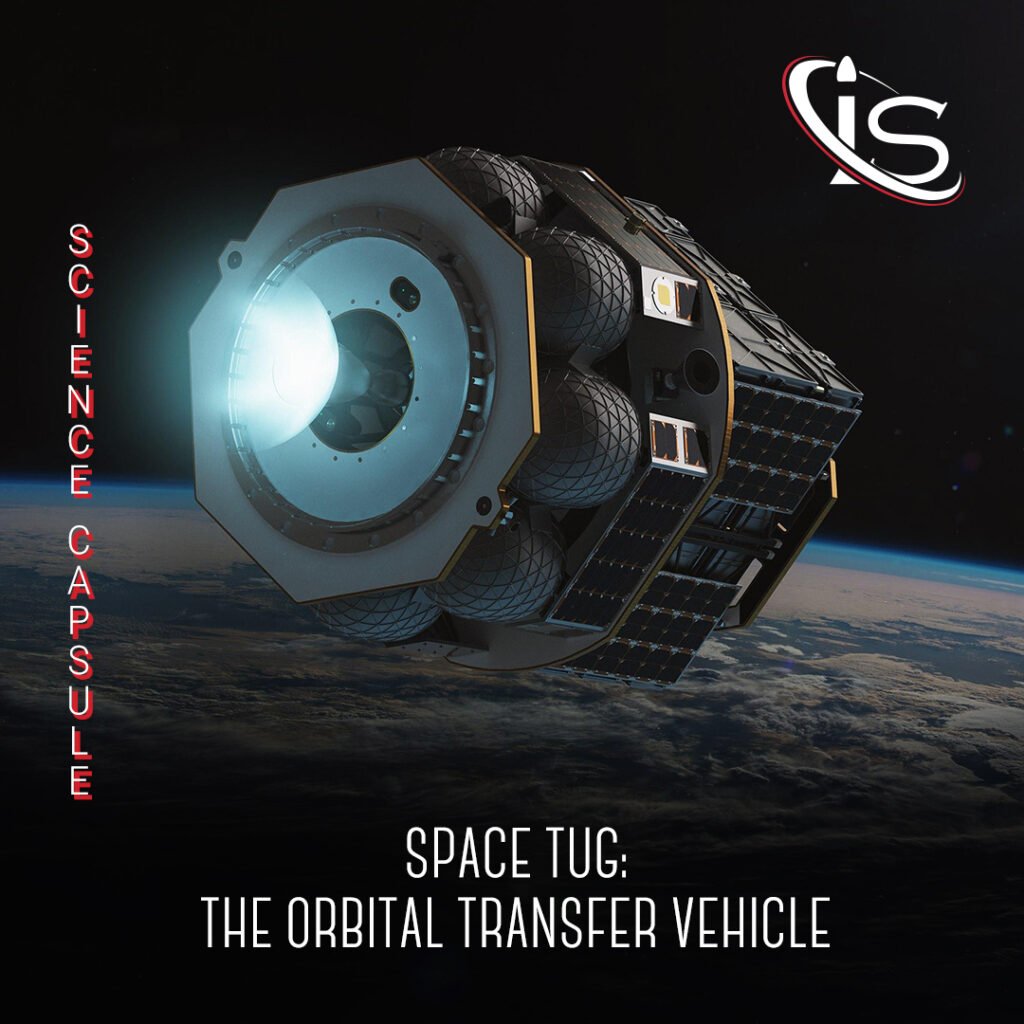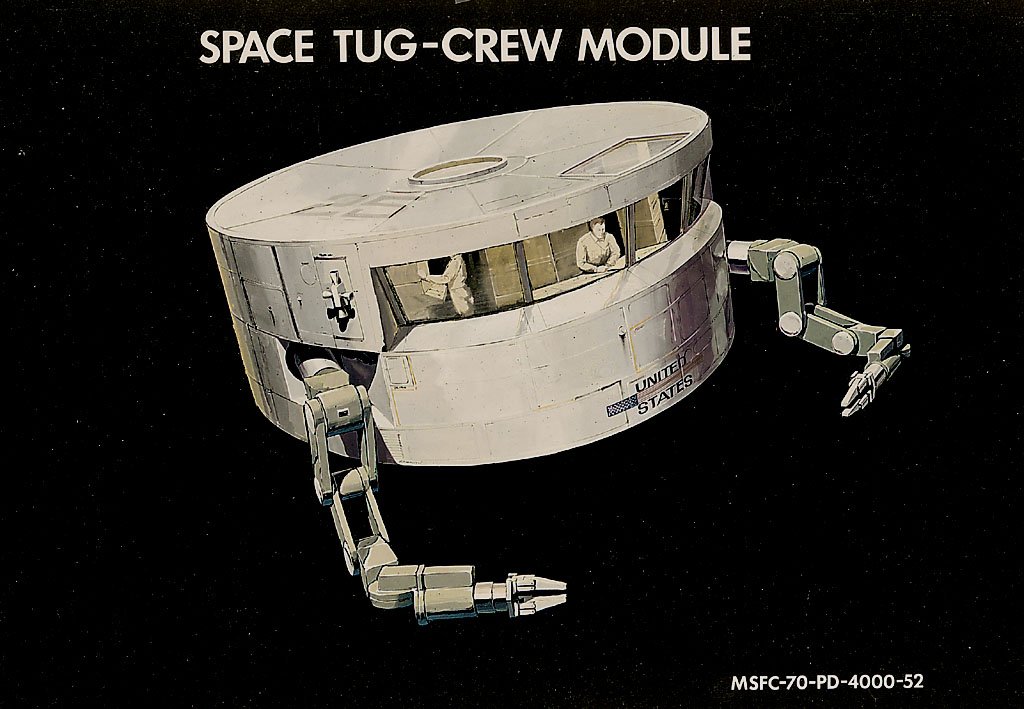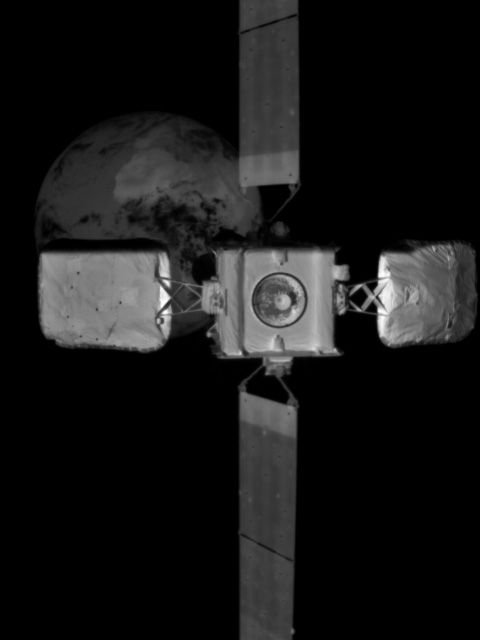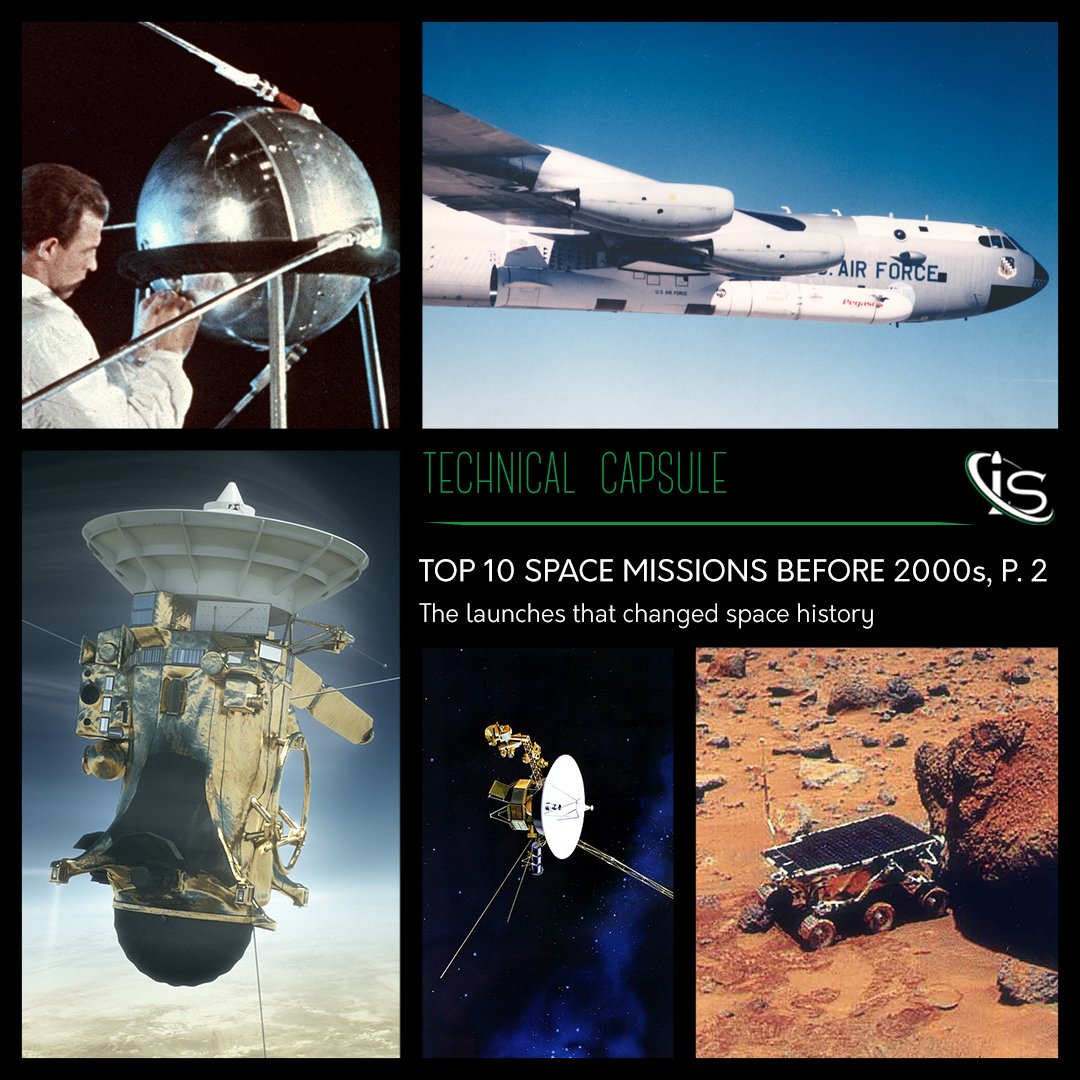Welcome to a bit of a different capsule. Instead of talking about a specific satellite, planet, or celestial object, today’s topic will focus on a broader subject matter: OTVs. Standing for Orbit Transfer Vehicle, this type of machine does exactly what the name would suggest. Help another spacecraft get to a desired orbit. That is also where the other, perhaps more common name for this machine comes from: the space tug. But to say that this description is reductive would be quite the understatement. So, how exactly do OTVs work? What challenges do they face? Basically, what lies behind the fascinating world of these machines? Without wasting any more time, let’s jump into today’s capsule and find out.

What Is a Space Tug?
Space tugs, or OTVs, whichever you prefer, are spacecrafts that are used to transfer some type of cargo from one orbit to another. The idea for them actually originates in the post-World War II era, with the goal being a support system for a space station orbiting Earth. And if you would like to learn more about space stations, you can check out our two-part series on the ISS. But after that shameless plug, let’s get back to the topic at hand.
While OTVs all generally have the same goal, that does not mean that they are all made with the same cargo in mind. Depending on the type and size, this cargo can be as large as a satellite, or as small as a cubesat. Furthermore, OTVs could be reusable, meaning the same one can assist multiple cargos before being shut down.
A Brief History
It is worth mentioning that, while the only concrete examples may come from recent years (as we will soon see), the history of space tugs is a long and tumultuous one. As I said before, the idea for them first came about in the post-World War II period. In fact, NASA had come up with a concept for an OTV that was to be used in conjunction with their STS (Space Transportation System). However, due to the lowering of funding that occurred after the Apollo Program, that project was scrapped. Well, at least most of it was. One part did remain in the form of the Space Shuttle.

After this, it would take until the 1980’s for NASA to take another crack at a space tug. Known as the Orbital Maneuvering Vehicle (OMV), it was going to be deployed in conjunction with Space Station Freedom. This OTV’s role was going to consist in retrieving satellites that would need to be serviced at the station. However, neither it nor the space station it was designed for ever got past the planning phase.
But now, with the general ideas taken care of, it is time to delve the different space tug categories.
Large Tugs
Given the still volatile nature of the space tug market, it should come as no surprise that this more ambitious cargo category does not have many examples. After all, one of the biggest obstacles faced by these machines is the amount of energy required to change the trajectory of another object. This only gets exacerbated when the cargo in question is large in size. What this translates to for the large tugs OTVs is only two real-world examples (so far that is). Well, technically two countries with a total of 3 large space tugs between them.
Now, the objective of these larger OTVs is conceptually simple but practically very complex to execute. Docking with a satellite in orbit and then propelling it to a different orbital path.
The Mission Extension Vehicles
The first machine to accomplish this was the Mission Extension Vehicle 1 or MEV-1. This was the result of a collaboration between the Orbital ATK and Northrop Grumman. A collaboration that eventually gave birth to the new company Northrop Grumman Innovation Systems. The idea, originally, came into being in 2011 as a collaboration between US Space and ATK (Alliant Techsystems Inc.), known as Vivisat. However, after US Space declared bankruptcy in 2016 and ATK joined Orbital Science Corporation form Orbital ATK, Vivisat was dissolved. This is where the collaboration with Northrop Grumman came in.
Finally, 8 years after the initial concept was thought up, the first large tug, MEV-1, was launched from the Baikonur Cosmodrome. And, in February 2020, MEV-1 docked with Intelsat 901 and returned it to a geosynchronous orbit. This marked both an extension of the satellite’s lifespan of about 4 years, as well as the first tug accomplished by MEV-1. Furthermore, MEV-1 will maintain this position for until 2025, at which point it will conduct Intelsat 901 to a graveyard orbit for its retirement.
Since then, a new Mission Extension Vehicle has been launched, MEV-2, on August 15th, 2020. Launched aboard the recently retired Ariane 5, its mission consists of performing similar space tugs for Intelsat-10-02. In fact, the first of these has already occurred on April 12th, 2021. Furthermore, MEV-2 was able to intercept and perform its space tug directly in Intelsat-10-02’s operational GEO orbit. This is in contrast to MEV-1 that had to dock above the GEO orbit before placing Intelsat 901 back in it.

Shijian-21
As alluded to previously, there is a second OTV that has successfully launched in the category of large tugs. And that is the Chinese spacecraft, Shijian-21. Between December 2021 and January 2022, this space tug was able to move the no-longer-functioning Beidou-2 G2 satellite from its geostationary orbit. This marked the first time a vehicle produced outside of the US accomplished such a feat. Furthermore, it was also the second time ever that this type of maneuver had been performed.
Small Tugs
Given the smaller nature of their cargo, these OTVs are more common than the previous ones. However, they still run into a lot of the same challenges. Therefore, it should come as no surprise that the number of real-world examples is limited here, as well. Still, there are certainly more in this category than the large tug one. Unfortunately, the characteristics for the small tug OTVs are also broader and harder to pin down. Therefore, I will not focus on all the individual spacecrafts. Doing so would only result in something both quite lengthy and not as helpful as the last section. Still, there will be examples of successful small tugs in order to provide a fuller picture of the topic.
Goals and Differences
With the goal for these OTVs usually involving the deployment of CubeSats and/or smallsats to various orbits, the way they function is slightly different. Whereas the large tugs actually dock on the targeted satellite, small tugs’ cargo is not large enough for that. Instead, they “simply” help propel these smaller satellites to their desired orbits. This can still be quite tricky, as the energy required is not insignificant here, either. Furthermore, the change in velocity and trajectory they impart — known as the Δv — needs to be quick, efficient, and precise. For example, the small tugs being produced by Momentus Space focus on achieving Δv’s of 1 km/s. That is quite the feat and something that will require a lot of energy no matter how small the cargo may be.
Just like the large tugs, these OTVs still require a rocket to launch aboard of in order to reach space. One of the most commonly used rockets for this purpose is SpaceX’s Falcon 9. Having carried the OTVs of companies like D-Orbit and Launcher, this rocket has been proving its flexibility once more by taking part in this new market. And yes, while they may not operate the same, small tugs are also a product of the last decade of space travel, much like their larger counterparts.
The Future of OTVs
This will do it for us today. I hope you have enjoyed learning about one of the most unique types of spacecraft out there. While I only focused on the current successful examples of OTVs, it is worth mentioning that more are in the works as we speak. For example, NASA’s current biggest program, Artemis, will utilize space tugs for its lunar landers. More specifically, their job will be to move the landers from the Lunar Gateway — the first planned space station outside of Earth’s orbit — to a low lunar orbit. And with the technology finally seeming to have caught up to this type of task, it is safe to expect more of this type of machine in the near future.
Also, for anyone feeling like there are some omissions to the list of space tugs, you would be correct. At least partially. Like I said before, some of the classifications for OTVs are hard to fully pin down. Therefore, there are some vehicles that could fall under this category, that I simply chose not to include. This is not because I necessarily think they do not fit, but more so because they are not as useful in identifying what a “classic” OTV is or does.
Regardless, thank you all for joining us in today’s capsule. If you want to keep up with impulso and everything space related, you can do so by simply following our social media pages. “See you” all in the next capsule, right here, at impulso.space. And for anyone who celebrates it, happy Thanksgiving!





